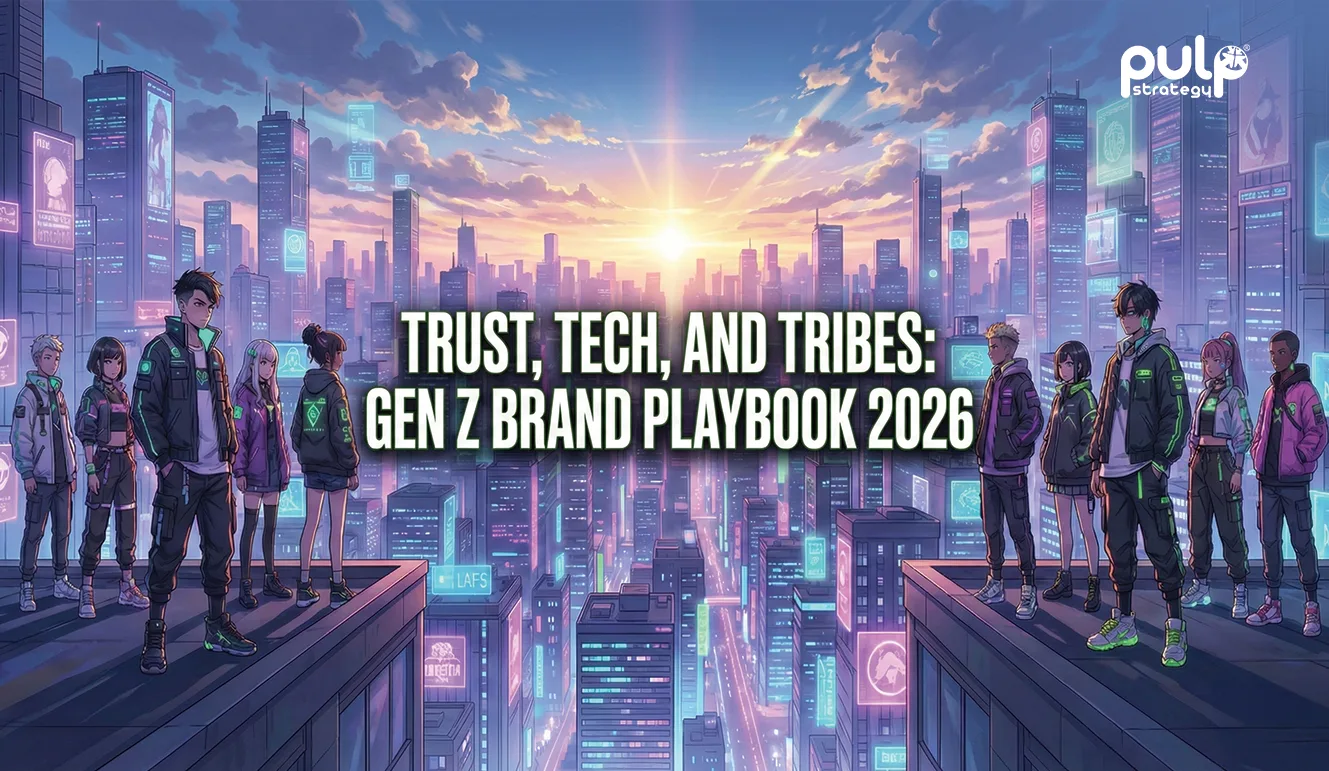A new brand or an already established brand that wants to increase its reach in the industry will, at one point, decide to invest in community-based marketing by creating or expanding its community first. Is your brand building the right community marketing strategies?
In today's rapidly evolving environment, customer expectation has become one of the most significant trends when it comes to interactions between businesses and brands. The new-age customers are not only looking for a great product but also expecting an authentic human connection with the brand as well as their community of customers. Their buying decisions are depending more and more on their identities and the communities they live in and belong to.
This relationship between customers and brands is growing by the day, making community-based marketing a crucial aspect of new-age marketing strategies. With customers losing trust in regular and standard marketing practices, community-based marketing is gaining more and more prominence. So, let's deep dive into what exactly it is, what are its benefits, and how can it impact your marketing strategies?
Community-based Marketing - What is it?
Community-based marketing is a form of marketing that focuses on building relationships and engaging with local communities. It is a way to connect with potential customers and create a connection between the business and the community. This type of marketing can be used to promote products, services, or events. It can also be used to build brand awareness and create loyalty among customers.
Community-based marketing requires businesses to have an understanding of the community they are targeting. They need to research the demographics, interests, and needs of the community. They also need to identify key influencers in the community who can help spread the word about their business. Once a business has this information, it can develop a marketing strategy that will engage the community and build relationships.
Community-based Marketing - What are the Benefits?
Enhanced Customer Experience
When executed correctly, community marketing provides marketing professionals with a deeper understanding of their audience and generates an extremely authentic touchpoint for various tasks and processes like gathering product feedback, handling customer complaints, nurturing brand advocates and much more. An insight into the community members can provide a plethora of information that helps marketers and brands to deliver a well thought out and unique experience.
Increased Relevance and Loyalty
Customers often get inspired by effective loyalty programs, pushing them to re-purchase and build consistent relationships with brands. For marketers, this is a remarkable system to maintain acquisition costs and build brand equity. However, building loyalty programs is not an easy task. Providing customers with incentives is not enough anymore, and brands need to provide more relevant and varied loyalty programs for customers to build a relationship with the brand.
For brands, this means maintaining an uninterrupted and timely relationship. A strong community helps build and maintain this consistency as members of the community interact and rely on each other for purchasing decisions. Brands with online communities can add another layer of responsiveness by addressing customer queries and questions promptly, pushing potential customers in the right direction, at the right time.
Brand and Customer Humanisation
One of the key aspects of this article has been the importance of brand authenticity. Marketing often feels inauthentic or hollow than trying to make customers feel like their needs are considered.
A good community marketing strategy will resolve this issue by putting the power in the hands of the community. Members will express their honest opinions (for better or worse), post genuine user-generated content, and develop their own unique relationships, that brands cannot replicate. The outcome is a more human and authentic experience.
Community-based Marketing - The Drawbacks
Unique skillset required
Community-based marketing looks exciting from the top but is considerably harder to do. Community-building is often in direct opposition to traditional performance marketing. It's tough to create highly targeted messaging and track its impact. Negative reviews are a part of community-based marketing and brands must be willing to take it with honesty and work closely with the members to improve their needs.
Marketers should also walk in parallel with the constantly evolving needs and fine-tune their approach based on community response. Brands can lose the trust of members if they don't sound authentic across any single touchpoint.
Impact in the Long Run
Not exactly a drawback, but marketers need to understand that a community strategy is long-term. Trying to work with a community to boost sales immediately or launching an ad campaign can backfire quickly. Marketers will need to be prepared to focus on long-term brand building and customer experience, which can often mean overlooking and foregoing short-term campaigns or targets.
Dedication and Commitment
Similar to the need for long-term, community marketing requires marketers to invest time into building or supporting community infrastructure, listening to members, taking in information and communicating regularly. Speed, authenticity and personalisation are key benefits in community marketing, but they require a team's attention.
Community-based Marketing - How to do it? (Tactics)
The importance of community-based marketing in this modern age is pretty clear. However, the right methods and tools to drive excellent brand communities are still difficult. Let's look at some tactics brands can use to improve customer experience.
Build Brand Advocacy and Ambassador Programs
Brand advocates, or brand ambassadors, are the voice of a community, driving conversations, setting up events, and making newcomers feel at home. Brand advocates are extremely important when tapping into brand communities. Brands need to set up advocacy or ambassador programs for them to be able to connect with these advocates and inspire them to contribute to community building. A brand advocacy program is a system that incentivises and encourages the customers to advocate on behalf of the brand. Brands can set up VIP clubs, reward programs, or even paid ambassador positions.
Connect on Online Platforms
Online platforms are an easy way to reach out to communities that need a digital place to connect. Marketers can create this space and moderate it to start conversations, communicate offers and receive feedback. It is important to understand the balance of control that the community members expect. If brand activities try to overpower community relationships, customers may develop a dislike towards the brand if they believe it is becoming a one-to-many advertising platform instead of a platform for people to share and connect.
Support Social Causes
One of the most authoritative tools that marketers have when it comes to community-building is the support of social causes. People naturally form strong bonds when it comes to supporting causes they are passionate about. Bonds like this aren’t just limited to other people - 76% of consumers expect brands to have a positive social impact on the communities in which they operate. There are several ways in which marketers can get behind social causes, like sponsoring social organisations, hosting events or making charitable donations. The most critical component of this method is for brands to prove themselves to their customers.
Conduct Events
Events are a straightforward tool for creating shared meaning and traditions within a community. Physical events are especially effective since they provide a platform for members to interact face-to-face and potentially meet the humans behind a brand. Events are neither easy nor cheap to plan, so it is crucial to first understand what would compel people to show up, and how to keep them engaged thereafter.
Gifting
Giving gifts is one of the most effective ways to grow local communities. It creates tangible value for customers and boosts their sense of good faith. However, it's no silver bullet - not all brands should use this strategy as gifts can come across like promotional giveaways rather than genuine gestures without any real intent behind them. To ensure that a gift has maximum impact, brands need both relevance in terms of what they provide while also considering how relevant they are towards members' interests or needs.
Community-based Marketing - Examples
Apple
Apple is one of the biggest consumer electronics brands in the world, and there's a lot that other brands can learn from them. The Apple Support Community offers much more than just peer-to-peer support. They boost customer success by providing a space for feedback, self-service support and knowledge-sharing across one of the most active fan communities worldwide. It builds engagement with user-generated content and uses gamification to reward and encourage constant participation.
Lego
The Lego community is one of the best examples of brand communities, which manifests in the form of a web platform called Lego Ideas. Originally, Lego Ideas began in 2008 in collaboration with a Japanese website. Since then, it has grown to become a major product ideation community. Here, Lego fans submit construction ideas, and popular ones end up on the shelves.
Red Bull
Established in 1987 in Austria, Red Bull has grown to dominate the energy drinks market, but there's much more to the brand than just energy drinks. The brand dominates a plethora of high-octane events from parkour to surfing to motocross to e-Sports. The Red Bull community combines social networking, sponsorship and word-of-mouth advertising to keep fans and other members informed about the various events. The brand constantly adjusts its marketing strategy to build better relationships with customers and advance its dynamic and high-energy image. This makes it a great online brand community example.
To conclude, communities are the building blocks of society. They build a reputation and brand for resilient growth in the long-term, as well as provide an outlet where people can feel like they belong to something bigger than themselves or their individual needs alone. If you are looking into creating communities online (or otherwise), keep these points top priority - carry a strong sense of empathy towards customers, and consistently create communication that helps SOLIDIFY relationships with community members.
If you’re not sure where to start or need help getting started, contact Pulp Strategy, one of the leading creative advertising agencies in India, and we’d be happy to assist you.








